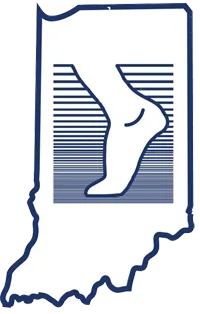As school slowly approaches, fall sports have started their early season practices. Specifically, cross country, tennis, and football season will be upon us shortly. Unfortunately one of the most common ailments of the lower part of the leg is shin splints medically known as Medial Tibial Stress Syndome (MTSS). The symptoms of MTSS include shin pain over the inside lower half of the leg. Pain at the start of exercise which often eases as the session continues, but can return the next morning. Mild swelling of the inner aspect of the shin bone, tibia.
The most common cause of shin pain is inflammation of the sheath surrounding the tibia bone known as the periosteum. This results from traction forces on the periosteum from the muscles of the lower leg cause shin pain and inflammation. Shin splints is a form of compartment syndrome where the muscles in either the medial, posterior, or anterior muscle groups in the lower leg swell due to increased activity. As may be seen in cross country, tennis, and football, athletes have not maintained fitness during the offseason and start engaging in high intensity activity. Thus these individuals may need to gradually increase activity and use rest, ice, compression, and elevation to reduce their symptoms.
More typically in my practice, biomechanical factors such as excessive pronation which strains the soleus muscle. This muscle has attachments along the inside of the shin bone. When an athlete excessively or rapidly pronates this places increased stretch on the soleus muscle resulting in pain and even microfractures of the shin bone. Other muscles implicated include the Posterior tibial muscle and the Anterior Tibial muscle. An experience podiatrist can aid in the proper muscle assessment.
In this case treatment is geared toward controlling the abnormal biomechanics, this is done with a custom foot orthosis. A custom foot orthosis requires a gait evaluation to gauge the degree of pronation and any compensation by the leg. In addition, a biomechanic evaluation is done with a custom mold or scan of the foot. Finally, a weightbearing foot x-ray which evaluates the position of the bones of the foot during the stance phase of gait. Furthermore, stretching to increase flexibility of the Achilles tendon helps alleviate symptoms.
Shin splints is a debilitating condition and can become chronic if not managed aggressively and diagnosed early. Thus athletes especially early in the season need to gradually increase their activity, where the proper shoes, and warm-up efficiently to prevent the onset of shin splints. If you unfortunately develop any of the aforementioned symptoms it is imperative that one rest and ice the area; however if symptoms persist, it is imperative that you consult a trained professional. Here at the Foot & Ankle Institute we can help get you back to activity quickly we are trained to evaluate this condition and manufacture a custom foot orthosis quickly so you can return to competition.
Good Luck this season to all the cross country runners, tennis players, and football teams in the Indianapolis Metropolitan area hopefully it will be a successful, injury-free season.
Shin Splints
Shin Splints
posted: Jul. 18, 2012.
Contact Us
Please enter the following:
Our Location
North West
5471 Georgetown Road Suite C Indianapolis
Plainfield
2230 Stafford Rd. Suite 145 Plainfield
South
8615 US 31 Suite A Greenwood
East
9670 East Washington Suite 215 Indianapolis
Downtown
1801 Senate Blvd. Suite 610 Methodist IU Campus
Carmel
12425 Old Meridian St. Ste A-2 Carmel
North East7950 N Shadeland Ave Suite 100 Indianapolis
7950 N Shadeland Ave Suite 100 Indianapolis
Fishers/Saxony13436 Tegler DriveSuite 100 Noblesville
13436 Tegler DriveSuite 100 Noblesville
